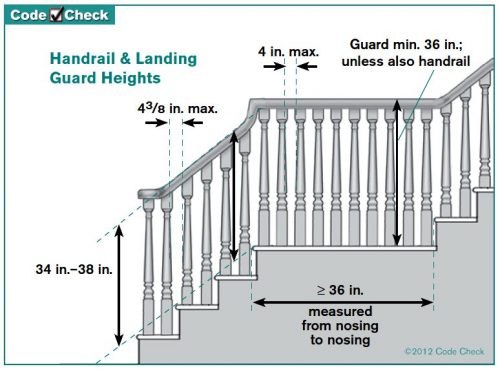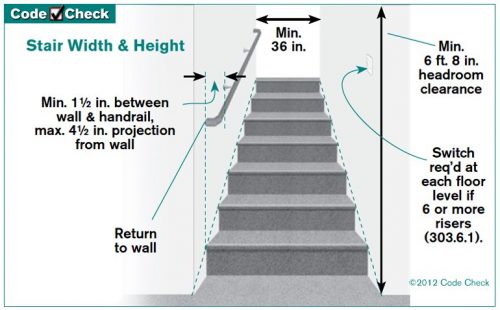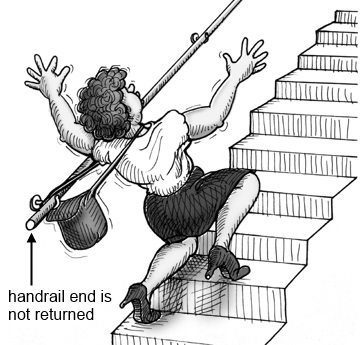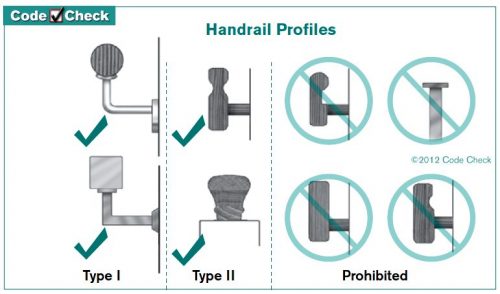Missing handrails just got upgraded to a must-fix item for homes in Minneapolis. This used to be rated as a “B”, now it’s an “RRE”. If you know what all that means, you can stop reading now. You have the Twitter version of the story. For everyone else, here’s the long version, from the beginning.
Truth In Sale of Housing Evaluations
If you’re planning to offer a home for sale in Minneapolis, you first need to have a Truth-In-Sale of Housing (TISH) Evaluation performed by a licensed TISH evaluator. I’m licensed, and so are four other inspectors in my company. Minneapolis maintains a list of all 63 licensed TISH evaluators on their website. These evaluations typically take about an hour to conduct, and reports are uploaded to the Minneapolis website where they’re publicly available for anyone to see.
A TISH evaluation is very different from a home inspection, and never a substitute. Even the newest real estate agents with absolutely zero experience know better than to tell their clients to skip the home inspection based on the TISH evaluation. Everyone in this market knows this, so I won’t harp on it.
While a home inspection will be filled with recommendations, a TISH evaluation has the power to require repair of certain conditions. According to the TISH Guidelines, the Truth-In-Sale of Housing Ordinance “is intended to improve the City’s housing stock and protect the public’s health, safety and welfare by removing specific code violations upon time of sale.” I put together a one-page list of the most common repair items back in 2010, and I’ve updated it several times over the years: see Common-TISH-Repairs-Minneapolis. Every time my company is hired to do a TISH evaluation, we email our client a link to this list ahead of time.
Missing handrails are now on the required repair list
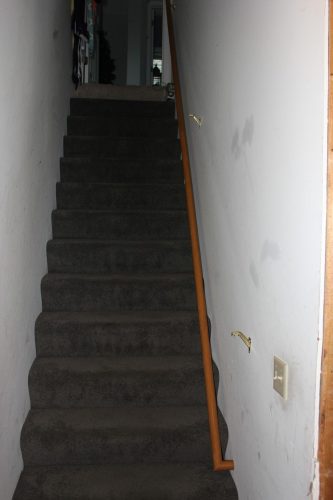 In the past, anything to do with a stairway could never be a required repair. Missing stairway? Missing handrail? Missing guardrail? None of these things would be a required repair items. There’s a lot of stuff that people probably assumed would be a repair item, but was not.
In the past, anything to do with a stairway could never be a required repair. Missing stairway? Missing handrail? Missing guardrail? None of these things would be a required repair items. There’s a lot of stuff that people probably assumed would be a repair item, but was not.
Thankfully, a missing handrail has been upgraded to a required repair item, per an email that was sent out to licensed TISH evaluators on November 22nd, 2017. The email said the following:
Effective immediately, Missing Handrails on basement stairs and No Handrail Assembly on hall stairs has been updated to an RRE to reflect current building code.
I applaud the intention of this change. Stairways are the most dangerous area in a home, and every stairway should have properly installed handrails.
My only complaint with this change is that it falls short. I asked a lot of questions immediately after receiving this email; what if the handrail is mounted way too low to be of use? What if it’s not a graspable profile? What about exterior handrails? What if it’s not attached properly, like the handrail pictured at right?
In all of these cases, it would not be a required repair. This is a black and white item; either the handrail is missing or it isn’t, and this only applies to the interior. If it’s missing, it needs repair. If it’s improperly installed, no matter how egregious, it doesn’t need repair.
Current handrail requirements
If a missing handrail is replaced, the new handrail must be installed to current code. For that, we turn to Chapter 3 of the Minnesota State Building Code and scroll down to section R311.7.8 Handrails. Or you could just read my interpretation of all that, along with some helpful diagrams courtesy of the fine folks at CodeCheck. I’ve listed the most common handrail installation defects below.
Improper height: handrails must be installed 34″ – 38″ above the sloped plane of the stairway. In other words, measure up from the end of the treads.
Not continuous: you need to be able to walk up a stairway without removing your hand from the handrail. If a handrail stops and starts again, it’s not continuous.
Too close to the wall: If a handrail is less than 1-1/2″ away from the wall, it’s too close. You need to be able to get your hand around it.
Not returned: handrail ends must be returned to the wall to help prevent people from catching clothes or other items on the handrail.
Not graspable: You need to be able to grab the handrail and hold it, not just rest your hand on top of it. The diagrams below help to explain this.
Author: Reuben Saltzman, Structure Tech Home Inspections

